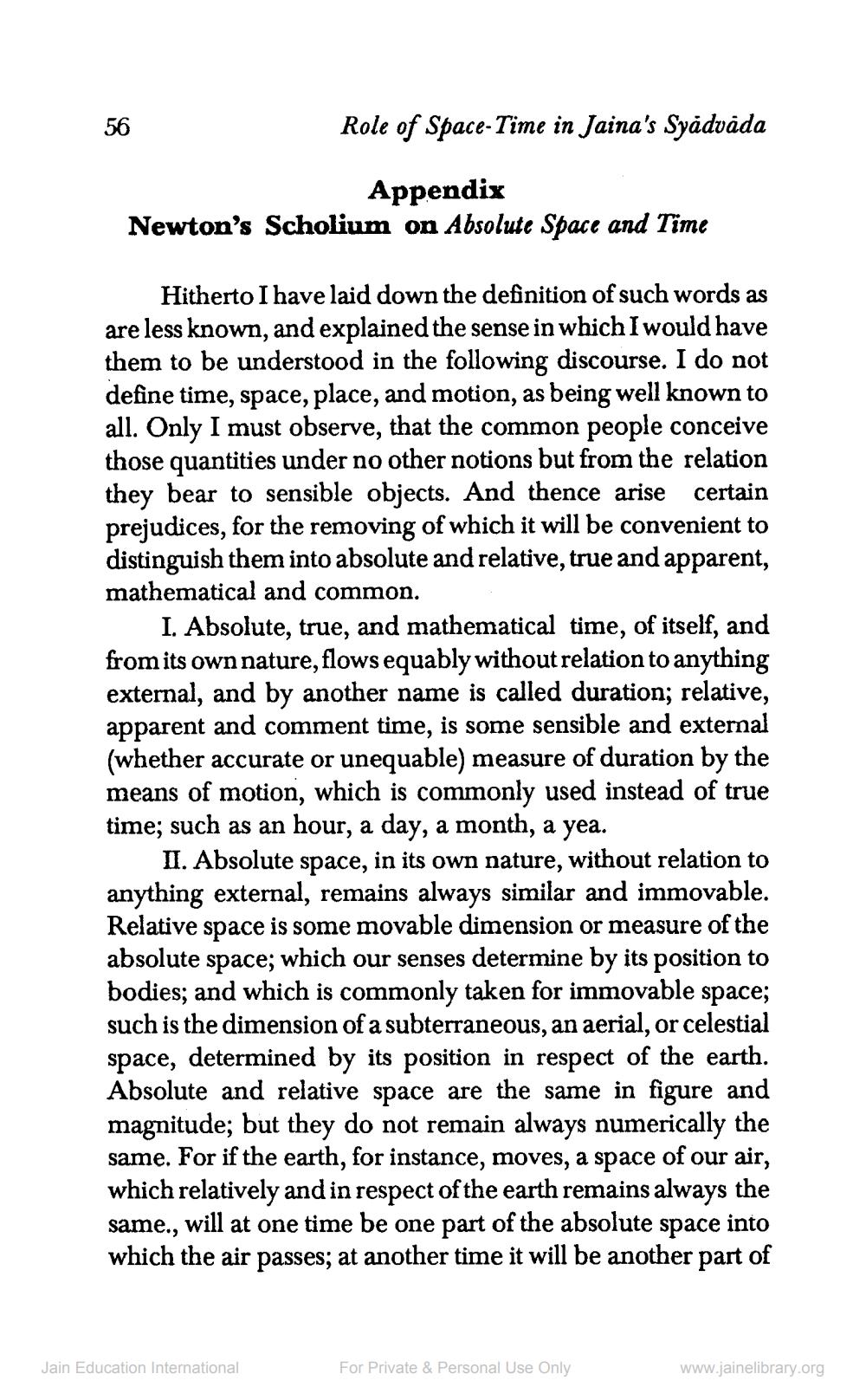________________
Role of Space-Time in Jaina's Syādvāda
Appendix
Newton's Scholium on Absolute Space and Time
56
Hitherto I have laid down the definition of such words as are less known, and explained the sense in which I would have them to be understood in the following discourse. I do not define time, space, place, and motion, as being well known to all. Only I must observe, that the common people conceive those quantities under no other notions but from the relation they bear to sensible objects. And thence arise certain prejudices, for the removing of which it will be convenient to distinguish them into absolute and relative, true and apparent, mathematical and common.
I. Absolute, true, and mathematical time, of itself, and from its own nature, flows equably without relation to anything external, and by another name is called duration; relative, apparent and comment time, is some sensible and external (whether accurate or unequable) measure of duration by the means of motion, which is commonly used instead of true time; such as an hour, a day, a month, a yea.
II. Absolute space, in its own nature, without relation to anything external, remains always similar and immovable. Relative space is some movable dimension or measure of the absolute space; which our senses determine by its position to bodies; and which is commonly taken for immovable space; such is the dimension of a subterraneous, an aerial, or celestial space, determined by its position in respect of the earth. Absolute and relative space are the same in figure and magnitude; but they do not remain always numerically the same. For if the earth, for instance, moves, a space of our air, which relatively and in respect of the earth remains always the same., will at one time be one part of the absolute space into which the air passes; at another time it will be another part of
Jain Education International
For Private & Personal Use Only
www.jainelibrary.org




